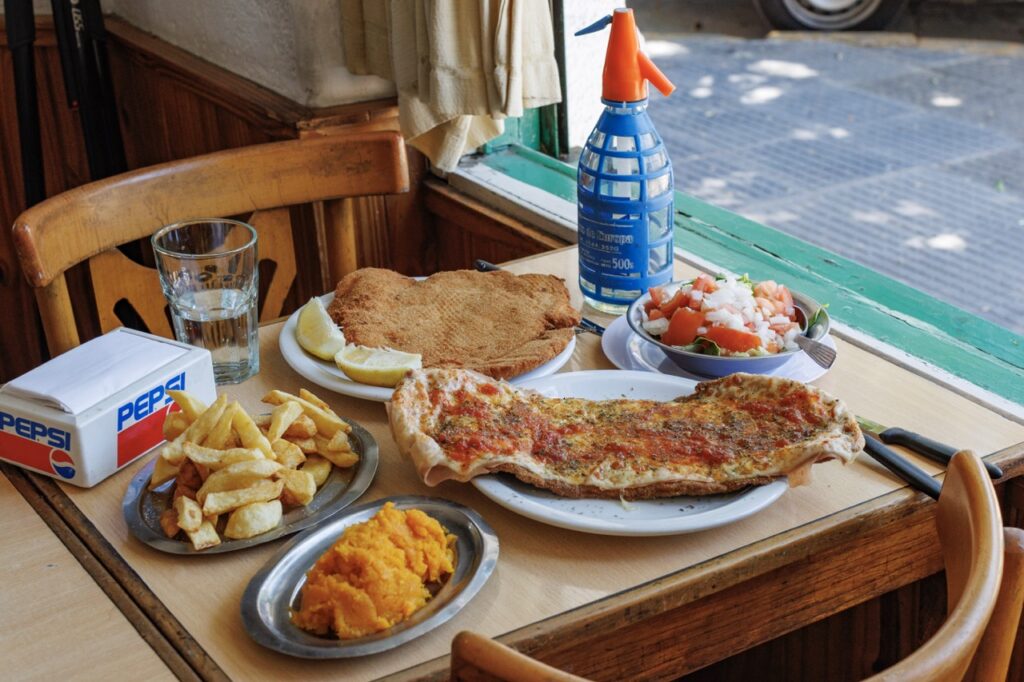
When it comes to food, Buenos Aires doesn’t do subtle. It’s a city that goes all in—grills overflowing with every cut of meat imaginable, pizzas smothered in molten cheese, and desserts dripping with dulce de leche. Recently, I had the challenge (and privilege) of narrowing down Buenos Aires’ essential dishes to just 12 for this SAVEUR Magazine article. But let’s be honest—this city’s culinary treasures cannot be contained to a dozen foods in a single list.
That’s why I wanted to share the behind-the-scenes process of writing that article. It all started with a massive list of every food and drink that’s ever graced a table in Argentina. From there, it became a ruthless game of elimination. One by one, I asked myself, “Is she iconic?” If the answer was no, off the list. If yes, she moved to the next round. Eventually, I even polled thousands of PUTF followers on Instagram to see which dishes they believed to be the most essential.
What you’re about to read is the unedited, unfiltered master list—the dishes that made the first cut before the big trim. If you’re new to Buenos Aires (or even if you’re not) and want a crash course in the city’s most iconic eats, consider this your ultimate checklist. It’s a culinary roadmap to navigating the food scene, featuring 36 dishes every traveler should try—and a few drinks for good measure.
36 Essential Dishes (and Drinks) of Buenos Aires
Alfajor
The ultimate Argentine cookie sandwich, filled with dulce de leche and coated in chocolate or coconut flakes.
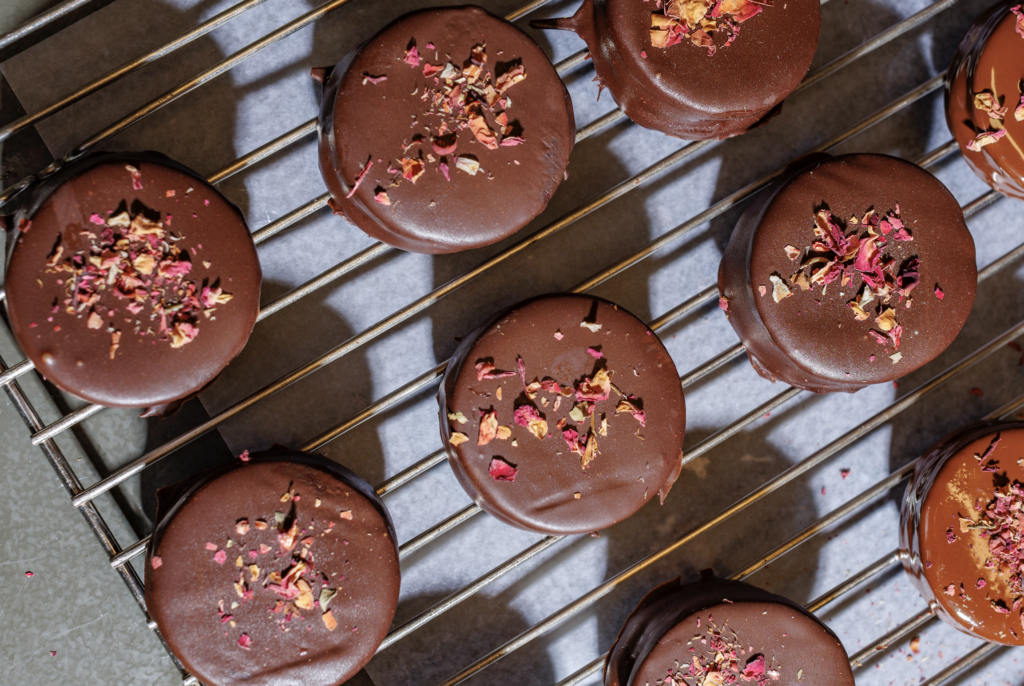
Asado / Parrillada
The heart of Argentine food culture. The parrillada is a mixed grill of beef cuts, sausages, and organ meats cooked over an open flame.
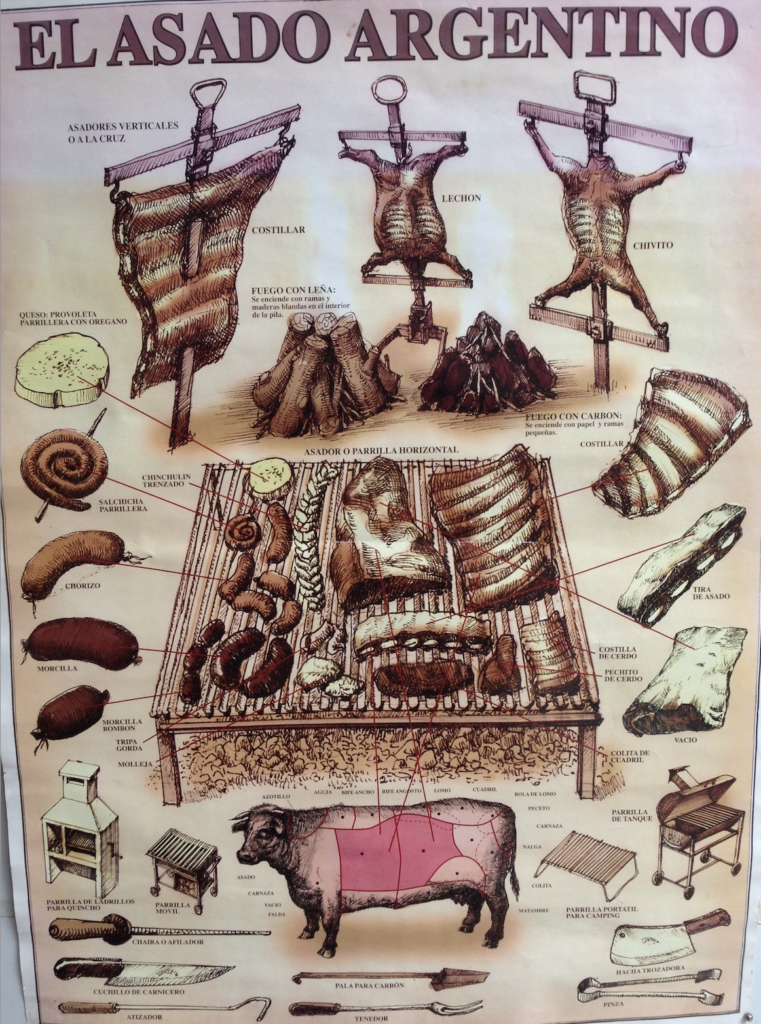
Chocotorta
No-bake dessert layers of chocolate cookies, cream cheese, and dulce de leche. A birthday party staple.
Choripán
Grilled chorizo in crusty bread, slathered in garlicky chimichurri. Argentina’s answer to a hot dog but way better.

Churros con Dulce de Leche
Fried dough filled with gooey dulce de leche. Best enjoyed with hot chocolate on a cold and rainy winter’s day.
Chipá
Chewy, cheesy bread balls made with manioc flour. Gluten-free and addictive, especially popular in the regions that border Paraguay and Brazil.
Clericó
A fruit punch with wine or cider. Think sangria’s Argentine cousin. Summer in a glass.
Empanadas
Handheld pockets of savory goodness. Baked or fried, the fillings range from beef to chicken, or ham and cheese.
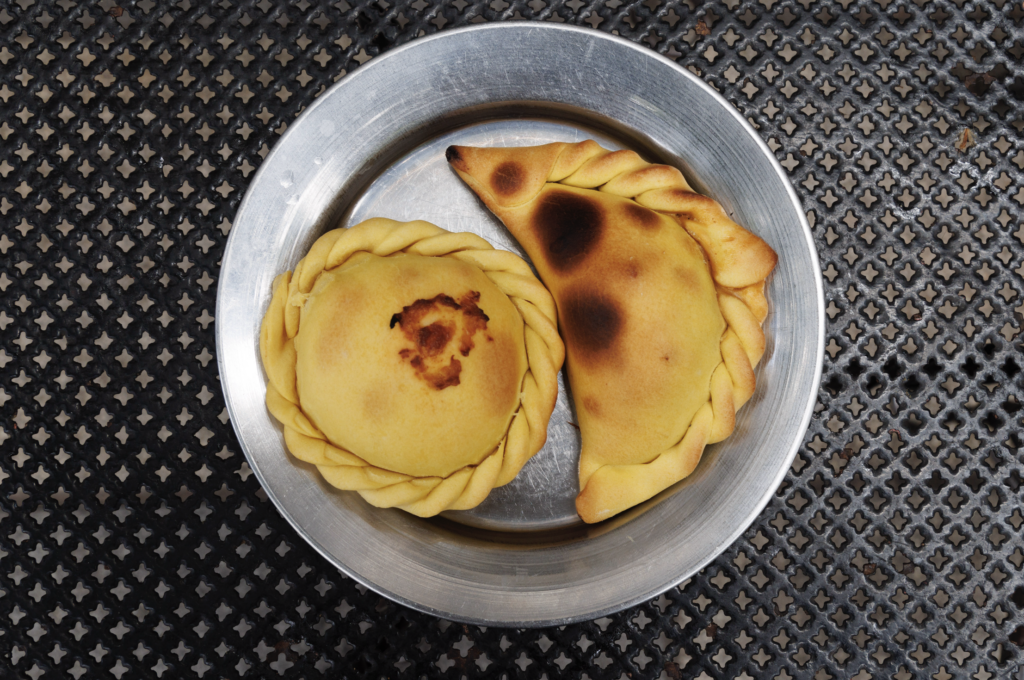
Facturas
Pastries for breakfast or merienda (the meal between lunch and dinner), like medialunas and vigilantes (with quince paste). Pair them with a cortado or mate for the ultimate treat.
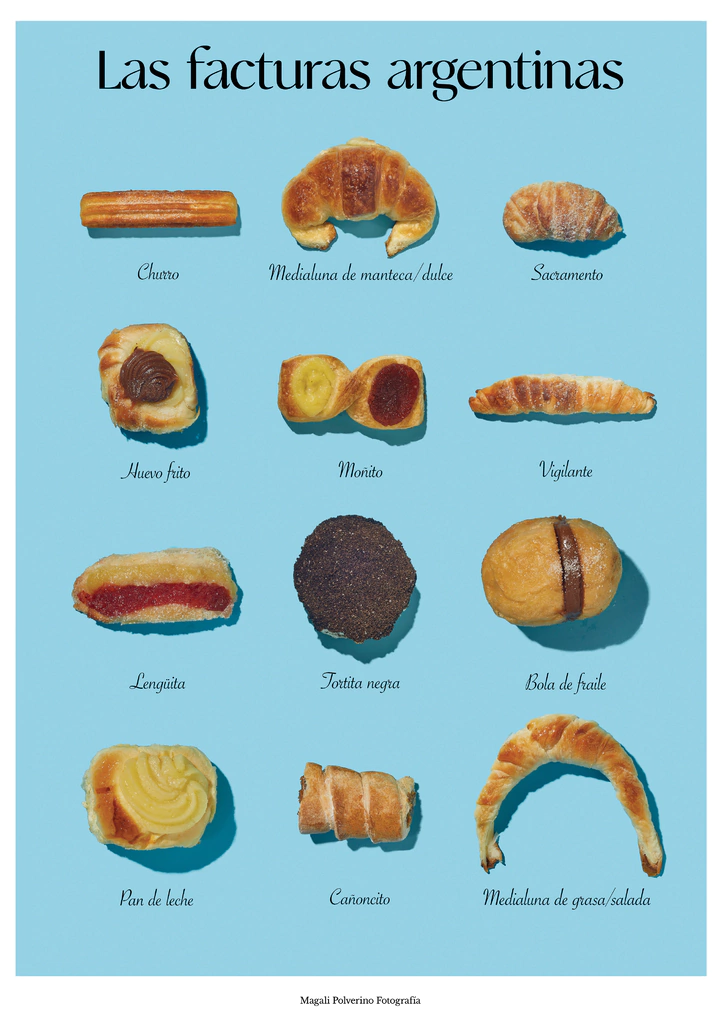
Fainá
A dense chickpea cake, often paired with pizza or eaten solo.
Fernet con Coca
A bitter herbal Italian liqueur mixed with Coke, pour it into a communal plastic bottle to drink it “viajero” style.
Flan Mixto
You know about flan, but the mixto part takes it to the next level: served with whipped cream and dulce de leche. As Argentines say, it’s “una bomba”—both in flavor and, well, a potential stomach detonation from all the richness.
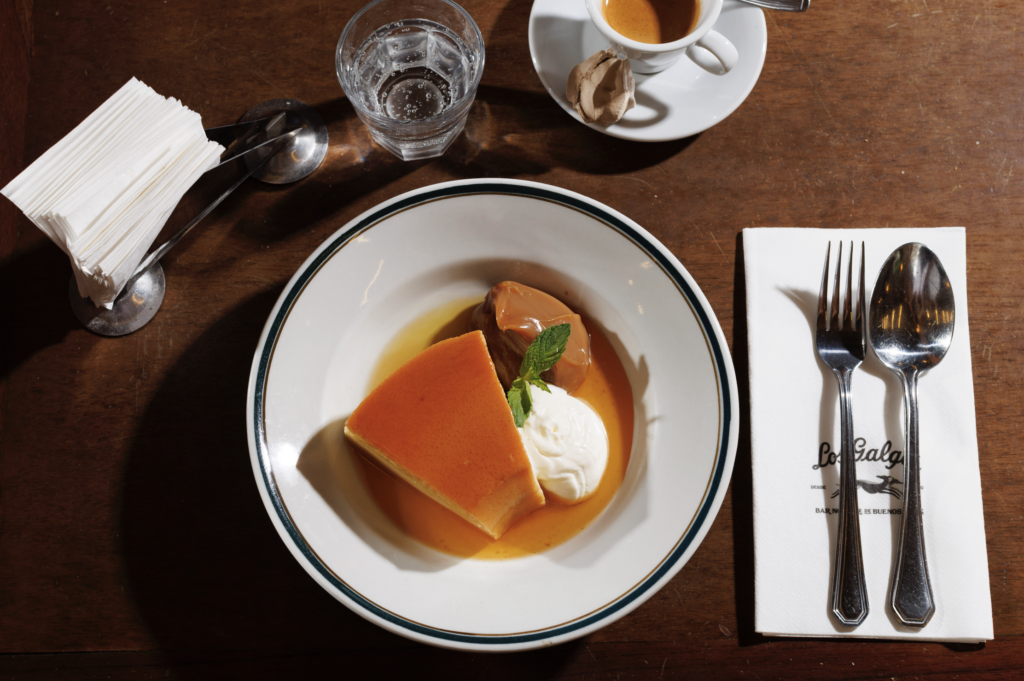
Fosforitos
I can’t believe it took me so many years to discover this wonderful invention: mini puff pastry sandwiches filled with ham and cheese, topped with a glossy sweet glaze. It’s a memorable bite.
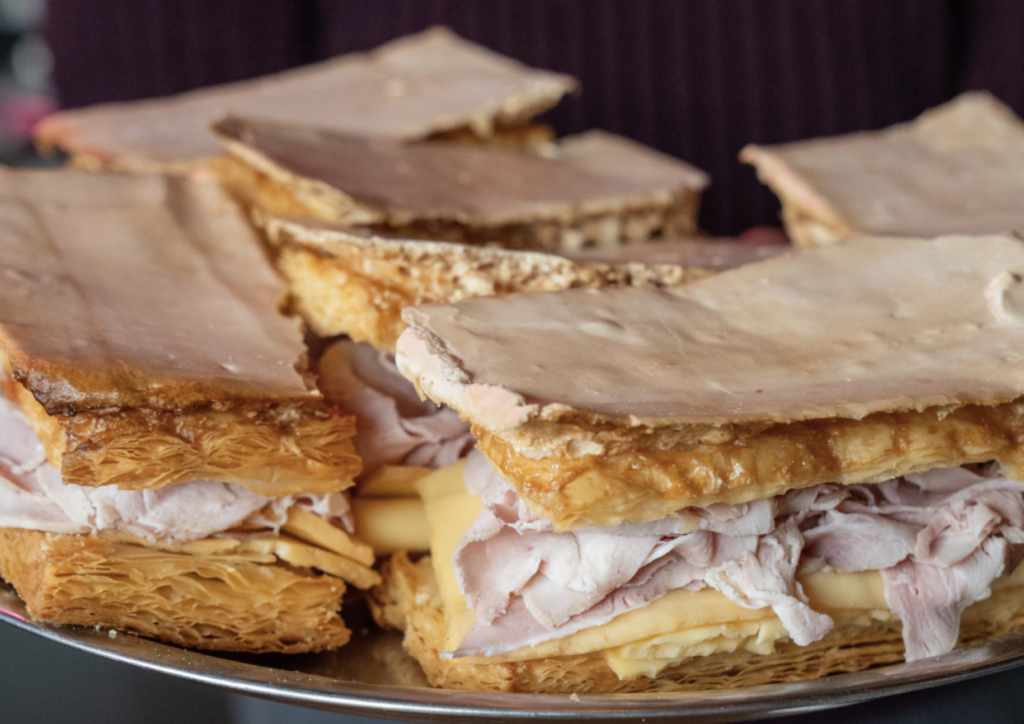
Guiso
Hearty stews with varying ingredients like lentils, rice, and meats. Comfort food for winter.
Helado
Italian-style gelato with a local twist. Dulce de leche is non-negotiable. Sambayón is also a local favorite.
Humita en Chala
Sweet corn and cheese pudding wrapped and steamed in corn husks, especially popular in the Salta region. It’s like tamales’ lighter cousin.
Kimchi
You might think I’m stretching with this one, but hear me out: Buenos Aires is home to one of the largest Korean communities in Latin America, and their influence on the city’s culinary scene is undeniable. From countless excellent Korean restaurants to kimchi popping up on menus at contemporary Argentine spots, it’s clear this iconic fermented staple has earned its place in Buenos Aires’ evolving food culture.
Lehmeyun
Thin flatbread topped with spiced ground beef, parsley, and lemon. A nod to Argentina’s Middle Eastern communities. It’s one of my favorite things to order when on the menu. It’s also served in triangular form and known as sfija, or “empanada arabe”.
Locro
A hearty stew of hominy, beans, squash, and pork, traditionally eaten on national holidays.
Mate
The iconic Argentine herbal infusion, sipped from a gourd with a metal straw. Sharing is mandatory.
Medialunas Rellenas
Soft croissant-like pastries stuffed with ham and cheese, often toasted and served warm. Another bomba.
Milanesa
Basically schnitzel. A breaded and fried beef or chicken cutlet, best enjoyed with a side of mashed potatoes, French fries, or in sandwich form. Napolitana style (with ham, cheese, and tomato sauce) is next-level, as is the “Maryland” with a fried banana and shoestring potatoes.
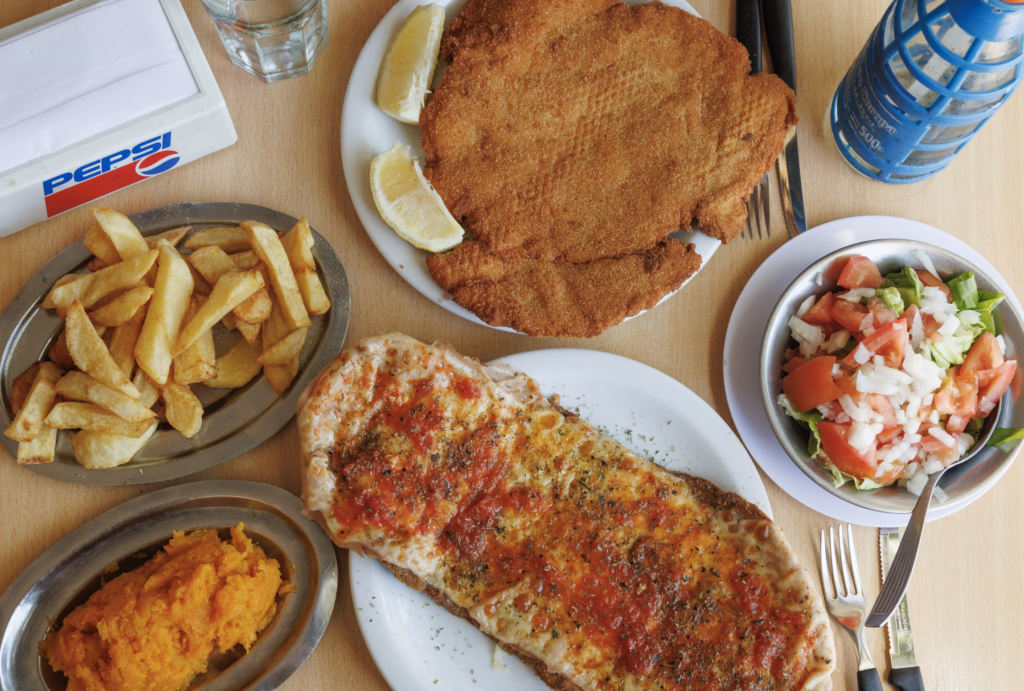
Miga Sandwiches
Delicate, crustless tea sandwiches filled with ham, cheese, and other nostalgic combos. Simple and absolutely adored. Caution: it can get soggy so best fresh.
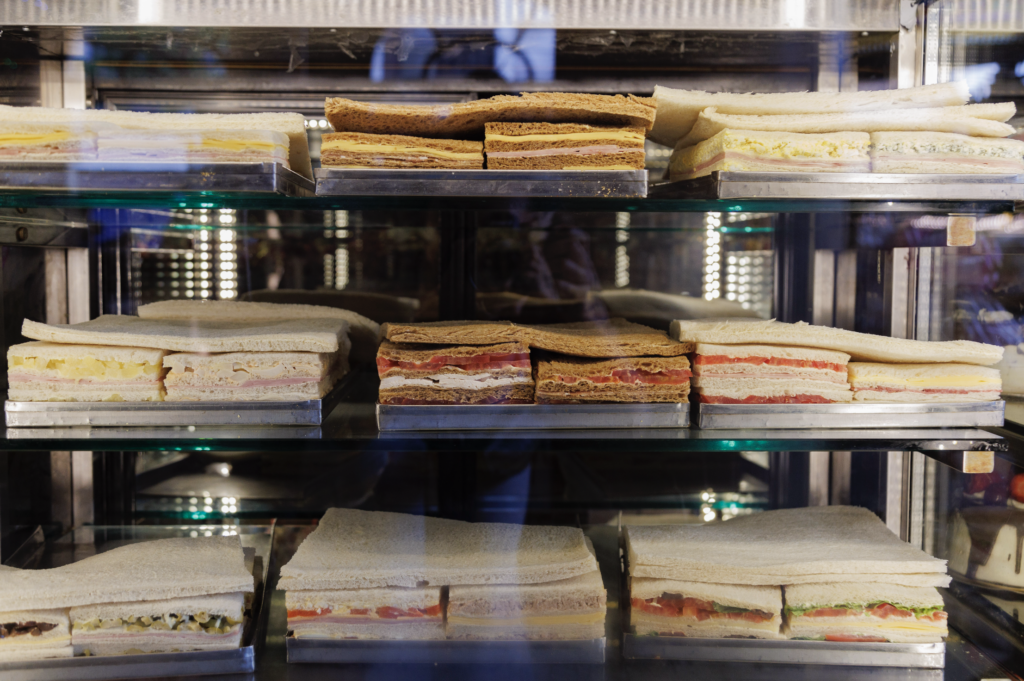
Ñoquis
Especially eaten on the 29th of each month, a tradition where potato gnocchi is served to stretch budgets and bring good luck.
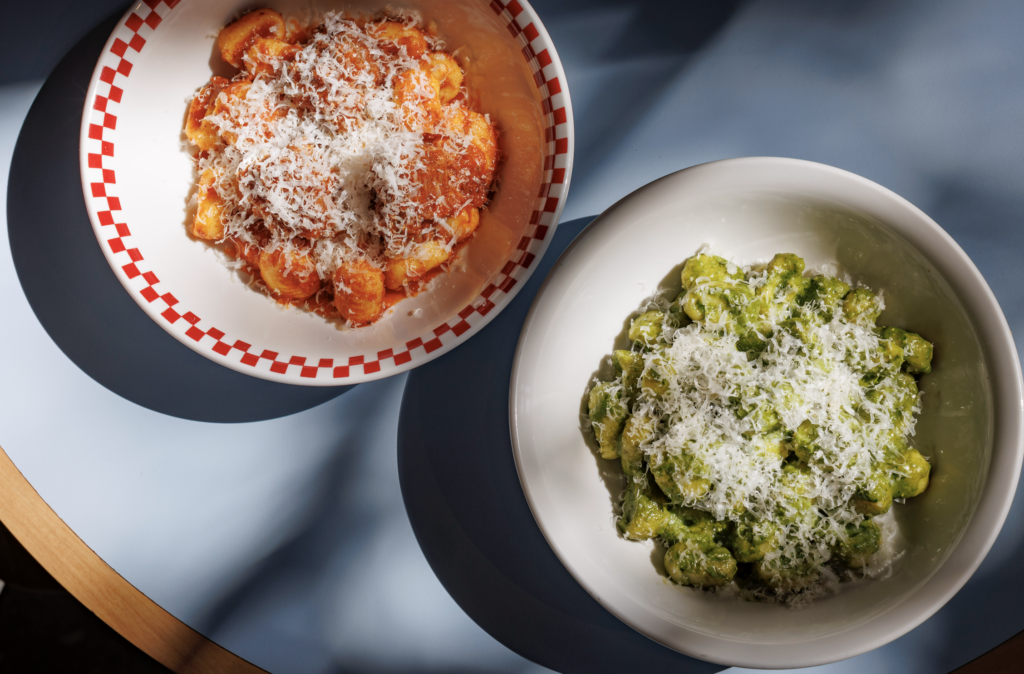
Pastafrola
A shortbread pie filled with quince jam, topped with a lattice crust. Nostalgia in dessert form.
Pastelitos
Fried pastries filled with quince paste, sweet potato jam, or dulce de leche, shaped into little stars.
Picada
A shareable platter of cured meats, cheeses, olives, and bread. Argentina’s version of a charcuterie board.
Pizza
Thick crust and overloaded with cheese, with barely any sauce. Order it napolitana with tomatoes and garlic or the fugazzetta with caramelized onions.
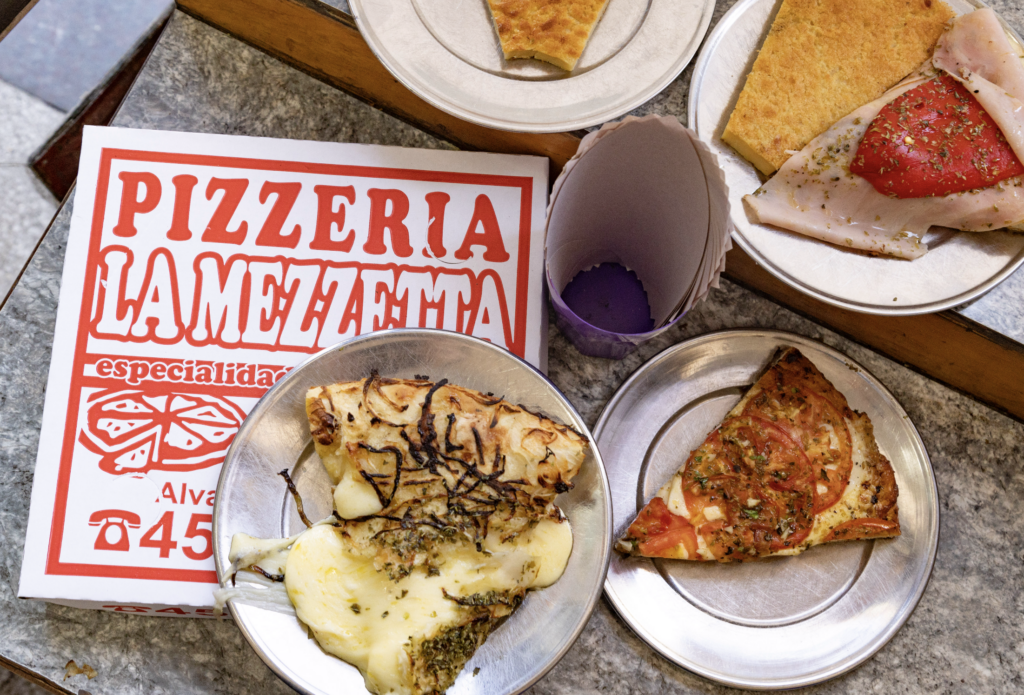
Revuelto Gramajo
A comforting scramble of fried shoestring potatoes, eggs, peas, and ham. It’s diner food, Argentine-style.
Sorrentinos
Argentine-style ravioli, but bigger, rounder, and filled with combos like ham and cheese or ricotta and spinach. Generally served with tuco (red sauce).
Tamales
Corn masa wrapped in corn husks and stuffed with spiced meat. A northern Argentine specialty.
Tarta Pascualina
A savory pie filled with spinach, ricotta, and hard-boiled eggs.
Torta Frita
Fried dough discs, traditionally enjoyed on cold and rainy afternoons.
Tortilla de Papas
Argentine-style Spanish potato omelet.
Vigilante (Queso y Dulce)
Cheese paired with quince paste or sweet potato jam. It’s sweet, salty, and perfectly balanced. Also known as the Martin Fierro dessert.
Vitel Toné
Slices of cold veal covered in a creamy tuna and caper sauce. A holiday favorite.
Where to Eat Them
If you’ve made it this far, I’m guessing you’re hungry for more than just a list—you want to know where to actually find these iconic dishes. Sorrynotsorry, but you’ll have to stay tuned because this article is already way too long. Keep your eyes on this space for my favorite picks where to eat in Buenos Aires. And if you have a favorite spot for any of these foods, don’t be shy, tell me in the comments!
Read on…
- Argentine Food Glossary – Pick Up the Fork
- 12 Dishes Every Traveler Should Eat in Buenos Aires – Saveur Magazine
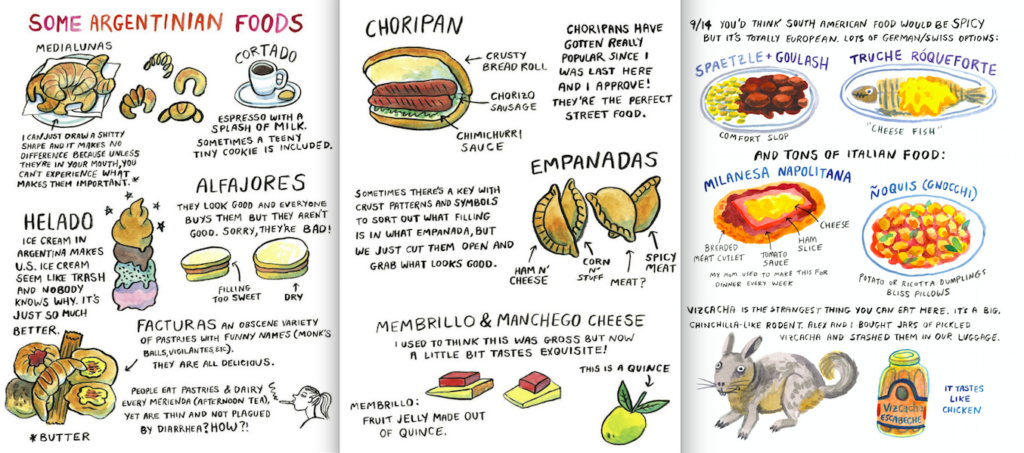
Grant Seifred says
Finally, I’ve found a food writer who is funny, not corporate, knowledgeable and knows how to put words together.
We will be in BA in October/November 2025, and we would love to take a food tour with you.
George says
Hi. I have been working on a translation of a book called “El Alfajor Argentino” Wonderful story of the Arab origins of the beloved snack. I don’t agree that they are “bad”. Maybe you still have lots of milage to do before you eat to the “great” ones. Please share an email so I can send you the book. Thanks, Merry Xmas and Happy New Tear!
William Steiner says
Welcome back, you were missed.
John Fell says
Whoever writes this is AMAZING!!!
forkyou says
Thanks cousin Johnny ; )
Fred says
Exactly what I need – an excuse to return to BA!